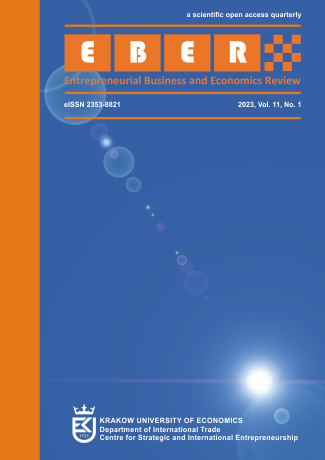Knowledge management orientation as a driver of competitive performance: Evidence from Polish SMEs in the aviation industry

Abstract
Objective: This study aimed to investigate the role of knowledge management orientation (KMO) in small and medium-sized companies (SMEs) as a driver of competitive position, with customer orientation and participation in international networks as mediating variables.
Research Design & Methods: The analysis involved structural equation modelling on a dataset of 281 SMEs from south-eastern Poland specializing in the aviation industry.
Findings: The study found that KMO was the strongest positive determinant of the competitive position in the model, with more than half of the effect contributed by indirect regression paths involving mediator variables. Customer orientation enhanced competitive position only through direct effects, while international network involvement contributed to competitive advantage indirectly through the network benefits variable. Interestingly, the only meaningful difference between small and medium firms was found in the regression link between network benefits and competitive position, suggesting that larger firms are better equipped to translate benefits from cooperating with international supply chain partners into advantages against business rivals.
Implications & Recommendations: To practitioners, the study demonstrates how the interplay between knowledge management and cooperation with the supply chain can provide substantive business advantages.
Contribution & Value Added: The study adds to the existing theory by underscoring the importance of KMO to SMEs and explaining its role as an antecedent of beneficial cooperation within international networks of business partners.
Keywords
knowledge management orientation, internationalization, competitive performance, small and medium enterprises, intangible resources
Author Biography
Bogdan Wierzbiński
Assoc. prof., PhD; Associate Professor at the University of Rzeszow, Institute of Economics and Finance (Poland). His research interests include entrepreneurship and international business.
Piotr Zaborek
Assistant professor at the Institute of International Marketing and Management, the Warsaw School of Economics (Poland). His research interests include business performance effects of organizational culture, business models, innovation management, and CSR, as well as, novel concepts in marketing, including service dominant logic and value co-creation.
Małgorzata Wosiek
PhD in economics; University of Rzeszow, Institute of Economics and Finance (Poland). Her research interests include human capital, unemployment and entrepreneurship.
Tomasz Surmacz
PhD in economics; University of Rzeszow, Institute of Economics and Finance (Poland). His research interests include supply chain management and entrepreneurship.
